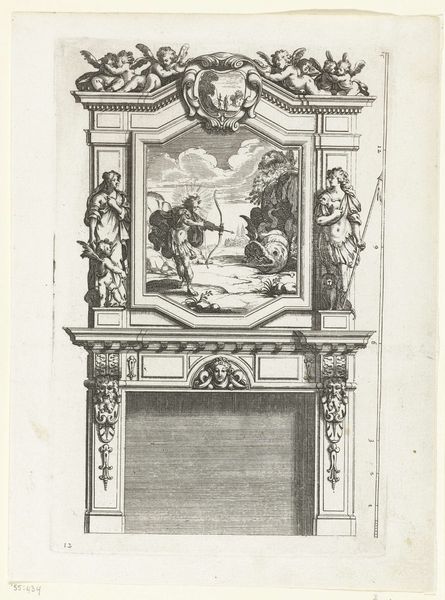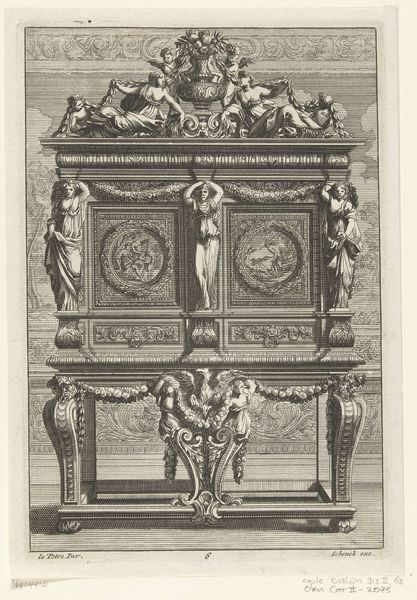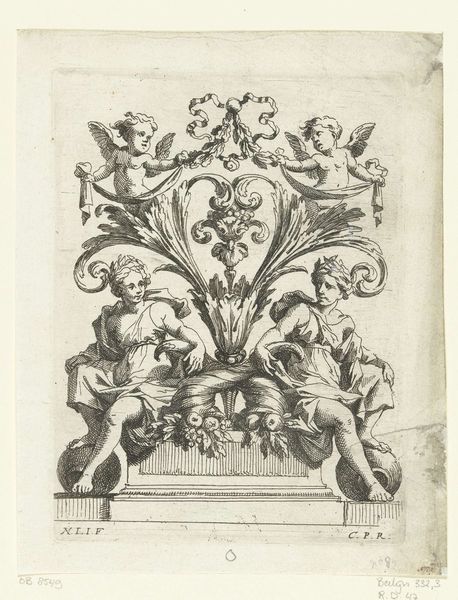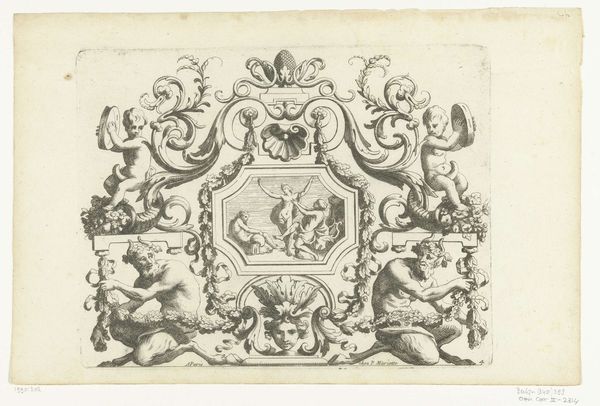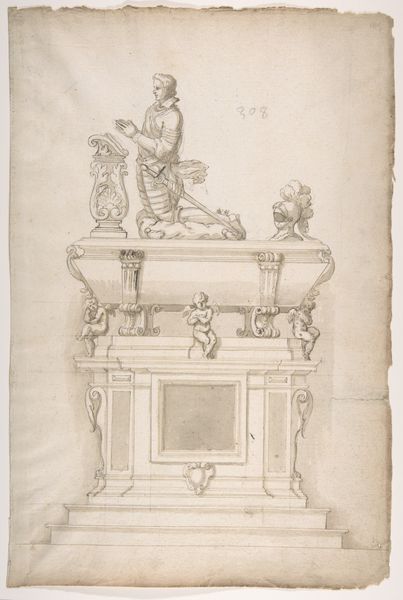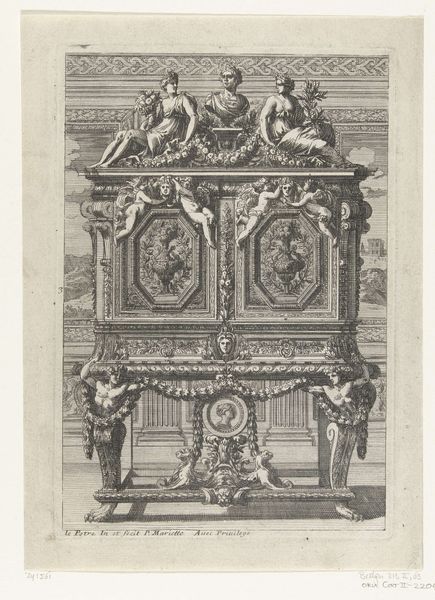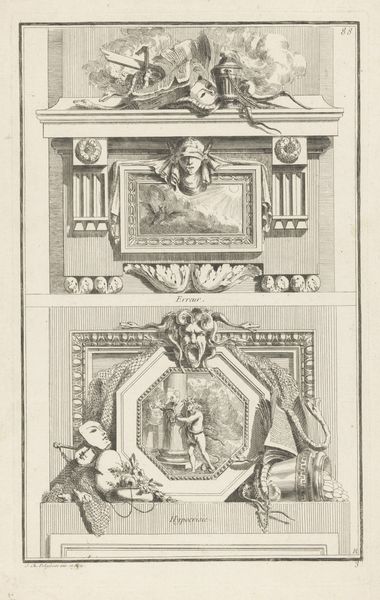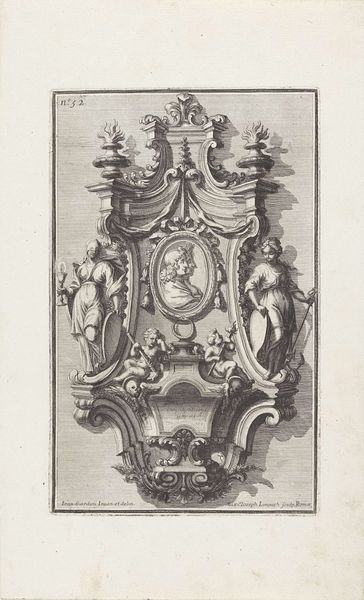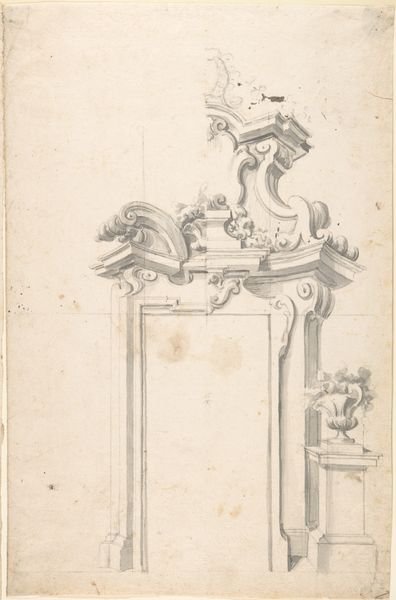
drawing, print, intaglio, engraving, architecture
#
drawing
#
baroque
# print
#
intaglio
#
classical-realism
#
figuration
#
engraving
#
architecture
Dimensions: height 312 mm, width 221 mm
Copyright: Rijks Museum: Open Domain
Curator: Look at this intricate drawing. These are "Two Crown Elements for Porticoes" dating back to 1642, from an anonymous artist currently held at the Rijksmuseum. Editor: Wow, even as a sketch, the detail is incredible. There's almost an overabundance of ornamentation – an impressive display of labor and skill in replicating luxury materials. Curator: Exactly. Consider the period. We're deep in the Baroque era; extravagance served as a symbol of power. These architectural flourishes weren't merely decorative. They represented wealth and authority within the Dutch Republic. Who did these designs serve, and how did the built environments function to create hierarchy? Editor: That level of ornament had to be immensely expensive to execute physically. I wonder about the guilds, the workshops that actually produced these architectural components, the process of finding and then transporting materials, and who profited from their installation. Were these designs common, or customized to order? Curator: Interesting questions. The inclusion of allegorical figures—cherubs and sphinxes—reveals a fascinating interplay between classical motifs and the demands of 17th-century cultural messaging. Are these forms reflections of, or aspirations toward particular ideologies? What impact do they exert on lived space for varied bodies, and for whom do these spaces become prohibitive? Editor: And we must ask: what kinds of labour were expended on crafting such opulence? And whose were they? There's a fascinating tension between the artisanal process, dependent upon craft-based skill, and these emblems of status for a new mercantile class. Curator: I agree; let’s consider not only the visual language of the porticoes but the broader cultural currents—the era’s preoccupation with luxury, status, and identity—to illuminate this unique artwork and open pathways of inquiry to new intersectional modes. Editor: Indeed. From the materials to the method to the social stratification—these elevations speak volumes about the complex workings of labour and taste that marked this period of intense aesthetic and economic production.
Comments
No comments
Be the first to comment and join the conversation on the ultimate creative platform.
